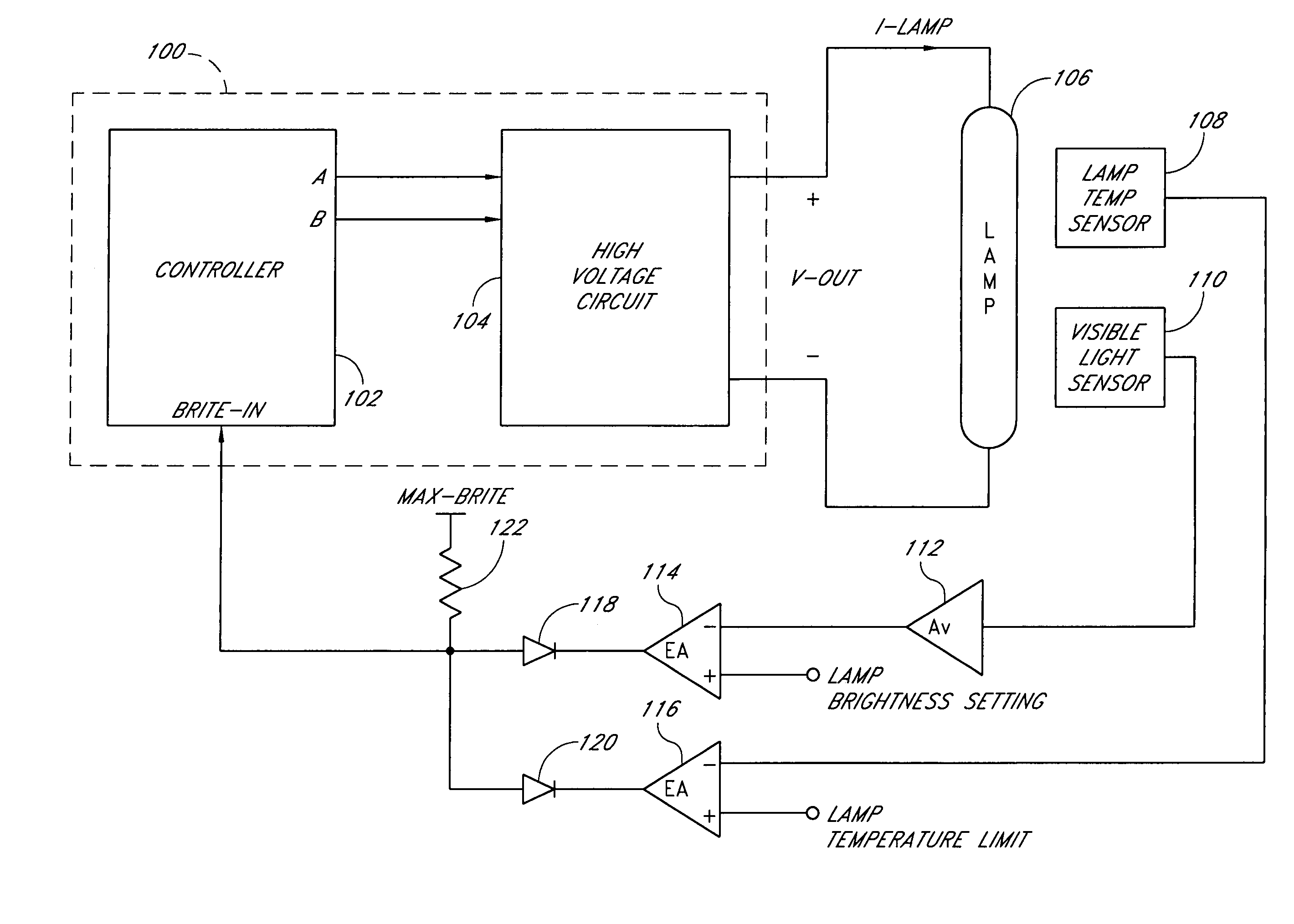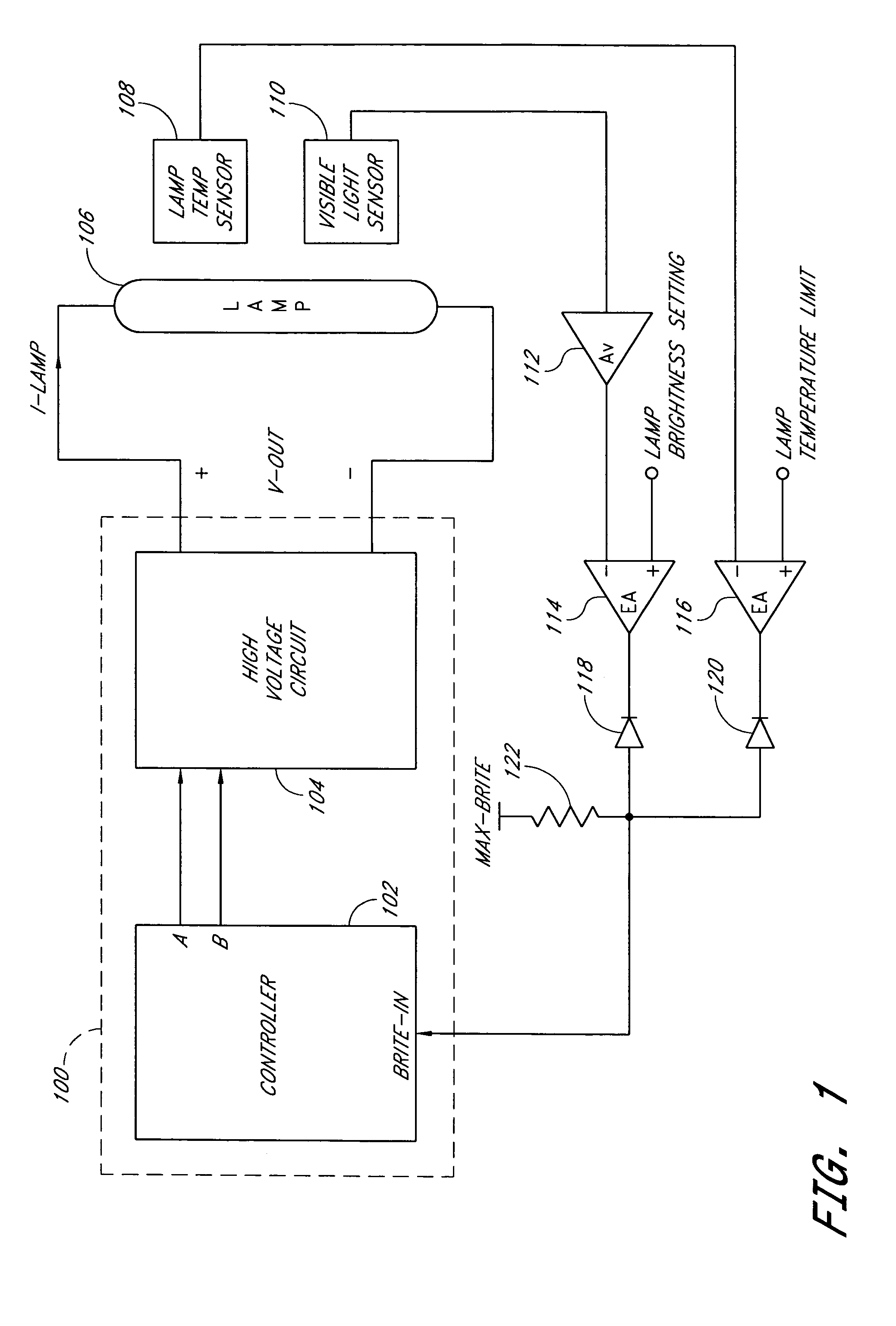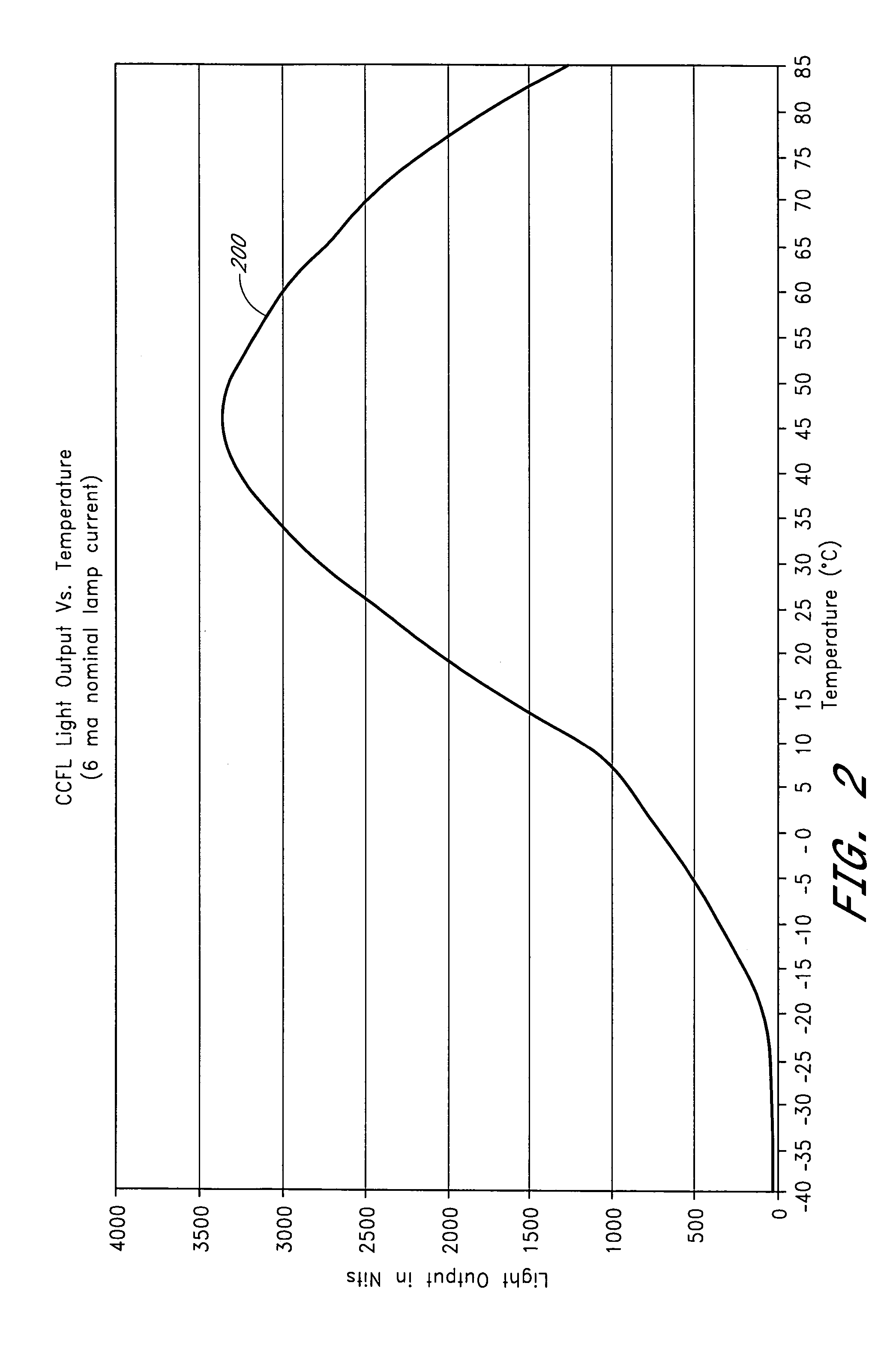Optical and temperature feedbacks to control display brightness
a technology of temperature feedback and display brightness, which is applied in the field of backlight system, can solve the problems of changing the characteristics of light sources with age, and achieve the effect of increasing the current level of lamps and facilitating displays
- Summary
- Abstract
- Description
- Claims
- Application Information
AI Technical Summary
Benefits of technology
Problems solved by technology
Method used
Image
Examples
Embodiment Construction
[0031]Various embodiments of the present invention will be described hereinafter with reference to the drawings. FIG. 1 is a block diagram of a power conversion circuit (or backlight system) with dual feedback loops in accordance with one embodiment of the invention. The backlight system may be advantageously used in automotive applications which are exposed to relatively extreme temperature variations and suffer brightness loss at low ambient temperatures. The backlight system can also be used in other LCD applications, such as computer notebooks, computer monitors, handheld devices, television displays, and the like. The dual feedback loops allow a user to set a desired brightness level for a backlight light source and maintain the desired brightness level over operating temperature and over degradation of the light source efficacy over life. The dual feedback loops also extend the useful life of the light source by maintaining safe operating conditions for the light source.
[0032]...
PUM
 Login to View More
Login to View More Abstract
Description
Claims
Application Information
 Login to View More
Login to View More - R&D
- Intellectual Property
- Life Sciences
- Materials
- Tech Scout
- Unparalleled Data Quality
- Higher Quality Content
- 60% Fewer Hallucinations
Browse by: Latest US Patents, China's latest patents, Technical Efficacy Thesaurus, Application Domain, Technology Topic, Popular Technical Reports.
© 2025 PatSnap. All rights reserved.Legal|Privacy policy|Modern Slavery Act Transparency Statement|Sitemap|About US| Contact US: help@patsnap.com



